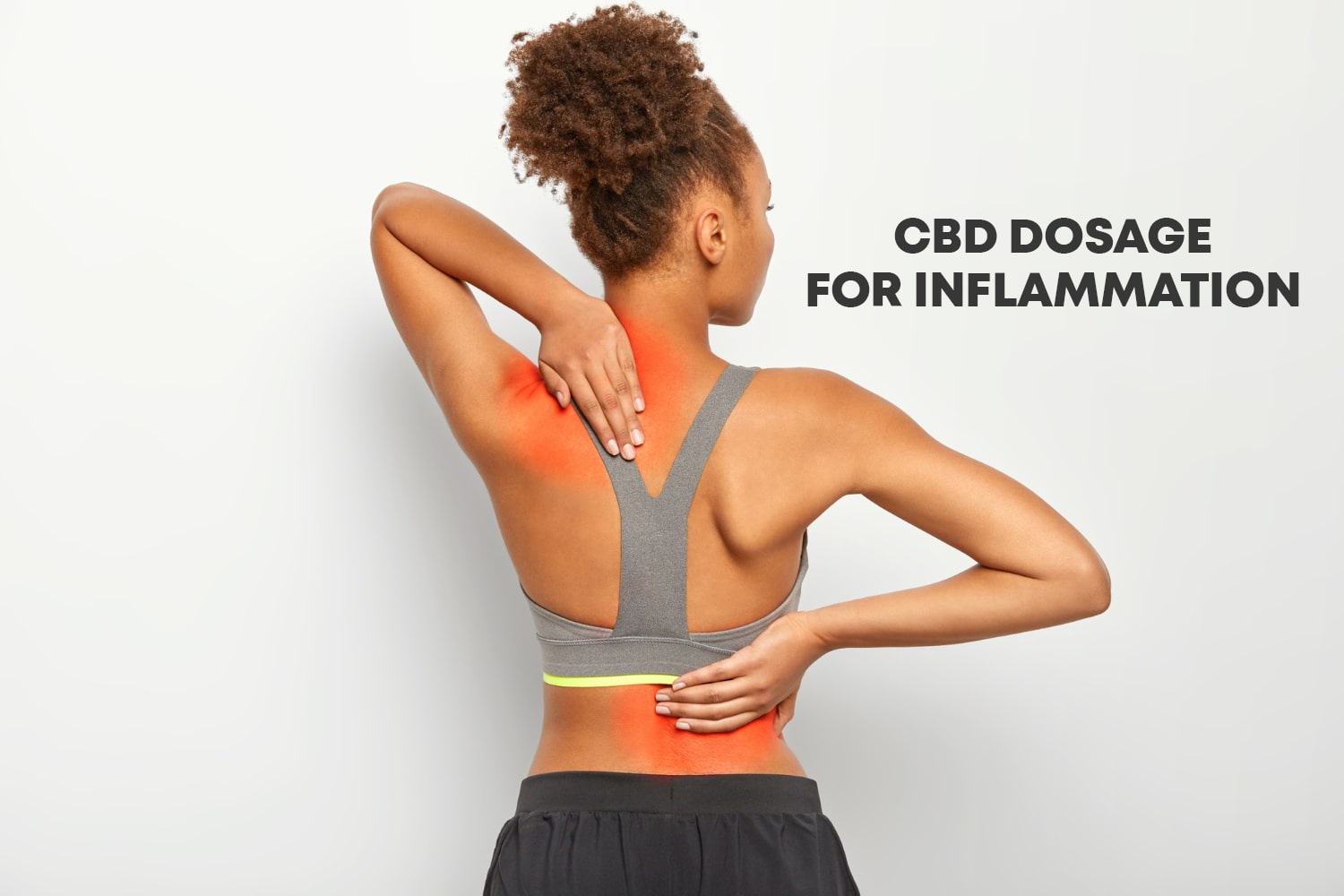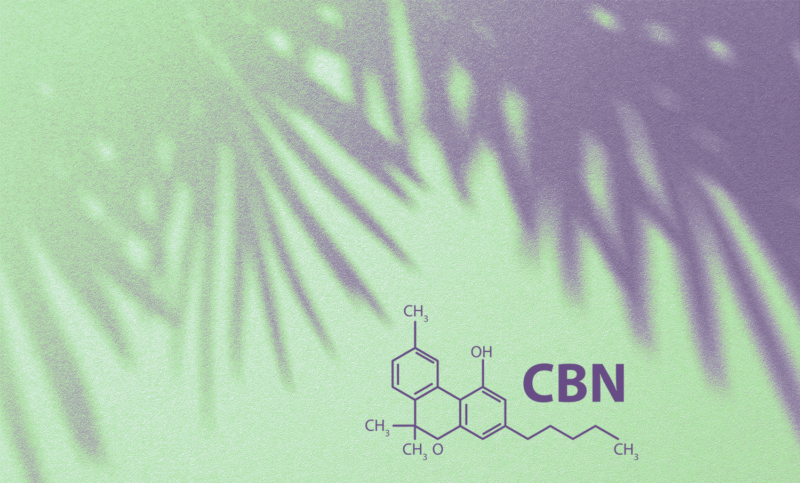
CBD for Inflammation: What’s the Correct Dosage?

Depending on where you live, CBD has likely popped up out of nowhere in the past couple of years. It’s had a lot of people wondering what the hype is all about.
A few years ago, you might not have even heard of CBD. But now you’ve learned more about it, and have been pleasantly surprised discovering maybe it’s not just a fad. As the amount of credible data on CBD continues to emerge, many people with difficult-to-manage ailments grow more and more optimistic about the prospect of CBD’s ability to help them.
Research indicates that CBD could provide health benefits for people with anxiety, sleep disturbances, cardiovascular disease, osteoporosis, and chronic inflammation. It may be able to reduce inflammation of the central nervous system, back, skin, bowels, eyes, and more.
The catch is, there’s only one FDA-approved drug with CBD as of yet, and it’s for rare forms of epilepsy. There’s another medically-approved CBD-based drug in use internationally for MS and cancer-related pain. But that’s it.
While it’s pretty well established CBD can help with pain and inflammation. For those of us interested in using CBD for other medical conditions, there are still important things that remain unclear.
One of the biggest uncertainties for most people just starting out with CBD is how much to take and how often.
Much of the existing research still focuses on animal studies, and we are still largely unsure about the effects of various CBD doses for different conditions. So it can be hard to find specific dosage instructions online applying to your body size, condition, symptom severity, and preferred form of CBD.
How Does CBD Treat Inflammation?
Cannabis and hemp plants naturally contain a compound called cannabinoids. What the cannabinoids CBD, CBN, CBG, and CBC all have in common are analgesic, anti-inflammatory, and antimicrobial properties. CBD is the dominant cannabinoid in hemp and is more extensively studied than the rest, by far.
The endocannabinoid system (ECS) is how the body processes cannabinoids like CBD., It is also responsible for keeping the body in balance throughout its complex systems. For example, there are cannabinoid receptors in the nervous system (CB1) and immune system (CB2).
One of the ways the cannabinoid receptors and endocannabinoid system regulate the body in response to CBD is by reducing inflammation. Underlying pro-inflammatory immune cells and funtions can also be regulated by these sytems. CBD’s anti-inflammatory effects can have a wide range of implications for inflammatory conditions and neuroinflammatory conditions. This is in addition to its ability to effectively alleviate chronic pain from a multitude of causes.
Some of these inflammation-related conditions may experience health benefits from CBD. Rheumatoid arthritis, ulcerative colitis, IBS, inflammatory bowel disease, osteoarthritis, and diabetic retinopathy, just to name a few.
For more information on read our article CBD For Inflammation.
How to Calculate CBD Dosage for Inflammation
The evidence so far suggests CBD is generally tolerated and safe, even at high doses, but how can we know exactly how much CBD to take?
The ideal CBD dosage for inflammation depends on your size, symptom severity, CBD type, and concentration. Let’s figure out how to calculate an appropriate dosage with all these factors in mind.
Body Size
If we look at the only FDA-approved CBD drug, the dosage starts at 2.5 mg per kg of body weight twice per day.
If you don’t have a scale with a kilogram setting, you can find your weight in kilograms by multiplying your weight in pounds by 0.45 on a calculator, or by dividing your weight in pounds by 2.2.
Once you get your weight in kilograms, multiply it by 2.5 to calculate the recommended dose of CBD (mg).
[weight in lb] x 0.45 = [weight in kg] OR [weight in lb] / 2.2 = [weight in kg]
[weight in kg] x 2.5 = [CBD dose in mg]
Symptom Severity
Using the above formula, a 150 lb person would start with about 168 mg of CBD per dose. That’s a very high dose, since this dosage formula is intended to control serious seizure disorders.
We don’t recommend starting at that level. Instead, this would be a good way to find the upper limits of how much to take for somewhat severe to very severe chronic pain and/or chronic inflammation. For example, 250 mg CBD daily has been used to treat arthritis.
What if your inflammation and pain fall within the range of very mild to moderate? To find out, let’s refer to a systematic review of cannabinoids’ effects on inflammation and immune cells. The review compiling data about animal studies, dosage, and more. This meta-analysis found the most common CBD doses tended to fall within 0.4-1.6 mg per kg of body weight. Let’s apply this baseline to our formula:
Mild inflammation: [weight in kg] x 0.4 = [CBD dose in mg]
Moderate inflammation: [weight in kg] x 1.6 = [CBD dose in mg]
Using this formula, a 150-pound person would take roughly 27 mg CBD for mild inflammation or 108 mg CBD for moderate inflammation.
Route
Another thing to consider is different types of CBD products have different bioavailability. Meaning, depending on how you take CBD, i.e. topical application, eating gummies, or sublingual oil, your body will absorb the CBD more or less rapidly.
Administering oil under your tongue (sublingually) is one of the most efficient ways to take CBD since the cannabinoid goes directly into your bloodstream.
CBD topicals tend to have less efficient absorption since they have to get through your skin into underlying tissues before they can be absorbed.
Gummies and capsules may be more bioavailable than topicals. But the CBD absorbs slower and less efficiently than sublingual CBD since your digestive system must process it before it enters the bloodstream.
Therefore, you may see stronger results from 10 mg of sublingual CBD, less noticeable results from 10 mg of CBD gummies, and minimal results from 10 mg of topical CBD. In other words, you may need more CBD from gummies and substantially more topical CBD to get the same results as a dose of CBD oil.
CBD Type
Speaking of oils and topicals; aren’t fluids measured in milliliters, not grams? Yes, if you get a CBD oil tincture, the dropper may have mL markings. So, after you calculate how many mg of CBD you should take, how can we convert that to ml of oil?
With the product label and a little math, the conversion is easy. Let’s say you have a 30 ml bottle containing 500 mg of CBD. One ml is 1/30 of the 500 mg bottle. So divide 500 by 30 to find out how many mg of CBD are in one ml of this particular oil.
500 / 30 = 16.67
So, 1 ml of this oil would constitute a dose of CBD measuring just under 17 mg.
Depending on the product, you may not have to calculate this. For example, this 500 mg bottle of CBD oil from Nature’s Legend tells you right on the label. One full dropper is a 1 ml serving size containing 17 mg CBD, and there are 30 servings in the bottle.
If you wanted to take a 30 mg dose of this CBD oil, you would divide 30 by 17 to find out how many ml to measure out.
30 / 17 = 1.76
So, to get a 30 mg dose of CBD, you would measure out 1.76, or about one and three-quarters ml of the oil.
Concentration
The last thing to account for is whether your preferred CBD product is isolate, broad-spectrum, or full-spectrum. According to the theory behind the ‘entourage effect,’ cannabinoids’ effects are stronger when combined with other cannabis plant compounds. This includes flavonoids, terpenes, and other cannabinoids.
Therefore, you might experience less noticeable effects from isolate CBD than full-spectrum or broad-spectrum CBD. That’s because broad-spectrum includes other hemp compounds besides CBD, and full-spectrum retains all the therapeutic components of the hemp plant or cannabis plant.
How Much CBD Should You Take For Inflammation?
Beyond the aforementioned variables, the general dosage rule for cannabinoids are as follows. Start with a lower dose than you think you might need, and slowly increase it until you get the desired results. It helps to follow your healthcare provider’s guidance.
Next, we break down roughly how much of the following CBD products to take for inflammation:
CBD Tincture Oil
When taking CBD tincture oil, check the label. Using the serving size as a reference, start with a dose of at least 5 mg. Eventually, you may work your way up to 200 mg for more severe inflammation.
CBD Gummies
For CBD gummies, you may need a larger dose to get results. Take at least 25 mg at once for milder inflammation, and potentially increase up to 200 mg per day if needed.
CBD Capsules
Similarly, CBD capsules can work for inflammation when taking between 25 and 200 mg daily.
CBD Topicals
It’s a bit harder to be as precise with CBD topicals. But for hand-applied topicals, start with a pea-sized dab on each inflamed area, and rub it into the skin. For roll-on topicals, apply a moderate layer onto the skin, but no more than will easily absorb into the skin.
Why It’s Important to Take the Right CBD Dosage
CBD doesn’t seem to have serious, life-threatening side effects, or too many side effects at all. But, individuals can experience adverse effects like dry mouth, dizziness, low blood pressure, and lightheadedness. These side effects are most likely to occur when taking too much CBD at once.
As a disclaimer, talk to a doctor before trying CBD, especially if you have a medical condition or take medication. If you want to take more than 200 mg of CBD per day, clear it with your healthcare provider first to avoid adverse side effects.
Frequently Asked Questions About the CBD Dosage for Inflammation
Is CBD good for inflammation?
Yes, CBD is an effective anti-inflammatory.
How much CBD does it take to fight inflammation?
Depending on your size, inflammation severity, and the type of CBD, you may notice effects with as little as 5 mg up to 200 mg daily.
Does CBD reduce inflammation or just pain?
CBD reduces both inflammation and chronic pain.
What happens if you take too much CBD?
Taking too much CBD can result in unpleasant side effects like dizziness, low blood pressure, lightheadedness, and dry mouth.
Have you ever taken CBD for inflammation?
The secret to relieving inflammation with CBD is finding the perfect dose for you. Everyone is different. Our size, inflammation level, and preferred type of CBD can significantly vary how much constitutes an appropriate and effective dose.
Now that you know how to calculate the right amount of CBD for inflammation, we hope you’re ready to discover your new favorite CBD products and are confident about taking the perfect dose.
Share this article:



